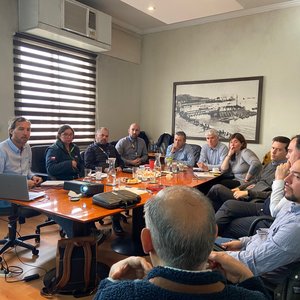The European Food Safety Authority has issued a Scientific Opinion on the safety and efficacy of vitamin D3 (cholecalciferol) as a feed additive for fish and other animal species or categories, based on a dossier submitted by DSM
The FEEDAP Panel found the vitamin D3 under application is regarded to be an effective dietary source of the vitamin in animal nutrition. The Panel made recommendations concerning (i) the specification of the product under application, (ii) labelling of the additive and (iii) the route of incorporation in complete and complementary feedingstuffs.
SUMMARY
Following a request from the European Commission, the Panel on Additives and Products or Substances used in Animal Feed (FEEDAP) was asked to deliver a scientific opinion on the safety and efficacy of vitamin D3 (cholecalciferol) as an additive to feed and water for drinking for chickens for fattening, turkeys, other poultry, pigs, piglets (suckling), calves for rearing, calves for fattening, bovines, ovines, equines, fish and other animal species and categories.
The principal physiological role of vitamin D in all vertebrates including humans is in calcium and phosphorus homeostasis. The classic clinical deficiency syndrome is rickets.
The FEEDAP Panel notes that for turkeys for fattening, equines, bovines, ovines and pigs the maximum authorised (and proposed) feed content for vitamin D3 does not provide any margin of safety, and that, except for pigs, the current maximum authorised contents in feed for different species and categories are above the upper safe level, according to the National Research Council (NRC) data when animals were fed a supplemented diet for more than 60 days. On the other hand, no safety concern is identified for the use of vitamin D3 in chickens for fattening and fish. Notwithstanding the long history of supplementing compound feed with vitamin D up to the maximum content and the absence of publicly reported intolerances, the FEEDAP Panel is not in a position to draw final conclusions on the safety of vitamin D in animal nutrition based on the NRC data collection, which has not been revised for 25 years.
The FEEDAP Panel considers the current maximum authorised contents to be temporarily acceptable for the target animals. In the view of the FEEDAP Panel, a complete review of the more recent literature is necessary to maintain or to revise the current maximum contents. Any administration of vitamin D3 via water for drinking could exceed the safe amount of vitamin D3 and therefore represents a safety concern.
Current nutritional surveys in 14 European countries have shown that vitamin D intake by consumers is sufficiently below the UL. The FEEDAP Panel assumes that foodstuffs of animal origin monitored in these studies were produced following current production practices, including vitamin D3 supplementation of feed. It is concluded that the use of vitamin D in animal nutrition at the currently authorised maximum dietary content has not and will not cause the UL to be exceeded.
Vitamin D3 is not an irritant to skin and eyes and not a skin sensitiser. For some formulations of vitamin D3 there is a potential for workers to be exposed to high levels of vitamin D3 by inhalation. Inhaled vitamin D3 is highly toxic; exposure to dust is harmful to persons handling the additive.
Vitamin D is widely distributed in plants and animals, as a result of endogenous synthesis. It is susceptible to oxidation by light and air. No risk to the environment resulting from the use of vitamin D3 in animal nutrition is expected.
The vitamin D3 under application is regarded as an effective dietary source of the vitamin in animal nutrition.
The FEEDAP Panel made recommendations concerning (i) the specification of the product under application, (ii) labelling of the additive and (iii) the route of incorporation in complete and complementary feedingstuffs.
Download report from the link below (PDF).










